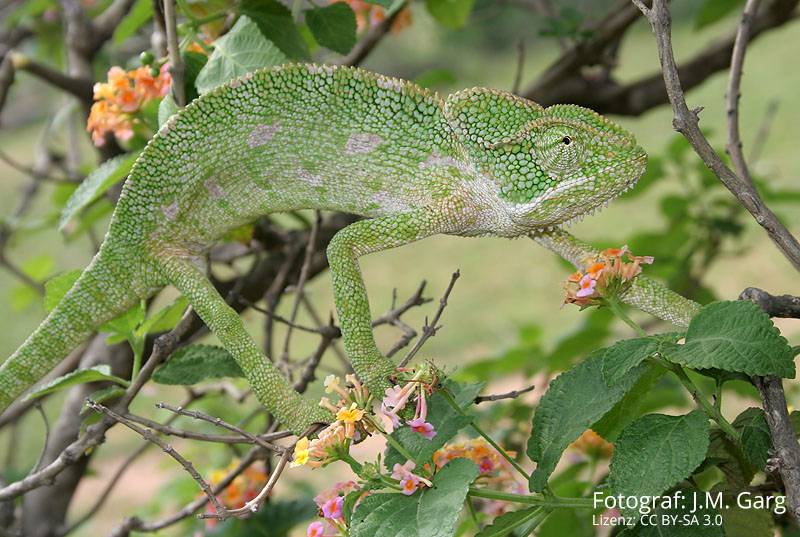Factors in the geographical dispersal of chameleons
For a long time, people have been trying to find out how and why chameleons have spread across the African continent, to islands and as far as Europe and Asia. French scientists, in collaboration with international colleagues, have now used phylogenetics and various computational models to investigate how the factors of body size, coastal habitat and extreme lifestyles may have affected the distribution of different chameleon species. The study examined 181 species divided into nine main biogeographical regions: North Africa and Arabia, Central Africa, Southeast Africa, Southwest Africa, India, Socotra, Madagascar, Comoros and Seychelles.
Chameleon species that occurred more than 10 km from the sea historically spread significantly less than the 74 coastal chameleon species. A similar phenomenon is known from skinks and crocodiles. Dispersal probably took place mainly along the coasts, mostly on the same continent and only rarely across the water to other continents or islands.
The size of the different chameleons also seems to have influenced their dispersal throughout history: Large chameleons spread further and more frequently than small chameleons. This could be related to the fact that larger chameleons have a lower metabolic rate – so they need less energy overall relative to smaller competitors. In addition, larger chameleons lay clutches with significantly more eggs, which simply gives them an advantage in numbers.
A somewhat unexpected result came from the study of different life cycles. One would initially assume that short life cycles are associated with faster dispersal. In fact, the calculations showed that especially chameleon species with extreme life cycles spread further. Thus, those that reproduced particularly slowly or particularly quickly were historically more successful among chameleons than the species “in the middle”. In this regard, the authors consider whether particularly slow life cycles with late sexual maturity and long gestation might be more successful on the same continent, while faster reproductive strategies with large clutches are more favourable for dispersal across the sea to islands and other continents. In line with this, Furcifer polleni and Furcifer cephalolepis in Comoros and Chamaeleo zeylanicus in India, all three examples of aquatic dispersal, have a very fast life cycle.
The 34 chameleon species with the combination of living close to the coast, large size and extreme life cycle had a 98% higher dispersal rate than species without these characteristics. All in all, this is certainly a very theoretical study, but it nevertheless provides exciting insights into the historical distribution and dispersal of chameleons.
Chameleon biogeographic dispersal is associated with extreme life history strategies
Sarah-Sophie Weil, Laurie Gallien, Sébastien Lavergne, Luca Börger, Gabriel W. Hassler, Michaël P.J. Nicolaï & William L. Allen
Ecography
DOI: 10.1111/ecog.06323


